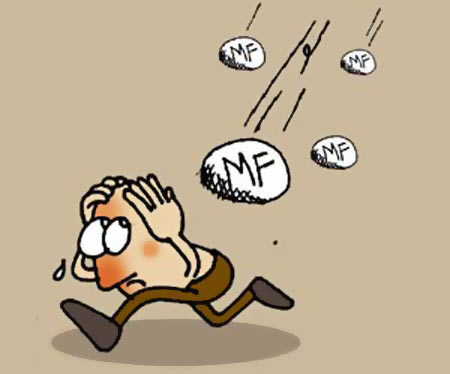
For retail investors, there will soon be another parameter that will help them decide on their investments - a colour code in which blue means low risk, yellow stands for medium risk and brown implies high risk.
This is yet another attempt by market regulator, Securities and Exchange Board of India (Sebi), to reduce mis-selling in mutual funds.
So, it has asked mutual funds not to highlight past performance, increased the font size of advertisements and taken many other measures to ensure the distributor or fund houses aren't able to influence investors.
But, industry experts say it may not be enough as this move could become a case of oversimplification.
...

Explains Dhruva Chatterji, senior analyst with Morningstar India, "Many who don't know the difference between a liquid fund and a gilt fund can choose either. Both will probably have a blue colour on it though both have very different associated risks."
Similarly, there are hybrid funds. Ones, which invest in equity and debt and yet others that invest in gold, debt and equities. How does one colour them?
Then, there are sector funds. For instance, while pharma and FMCG funds are classified as sector funds, they are defensives as well. So, should they get higher risk weight or get code brown?
In the past five years, FMCG and pharma have given returns of 23.6 per cent and 19.8 per cent annual returns.
...

No wonder, while everyone waits for the guidelines to come into force from July 1, there is a sense of scepticism. Chatterji feels there could be more colours.
But then, more colours would mean more complexity, which will confuse the investor further. So, there has to be a mid-way.
Industry experts advise relying on all three basic information - colour code, scheme's nature and objective - before buying the product.
Says certified financial planner Gaurav Mashruwala, "You cannot buy a scheme only based on the basic information the scheme may display going forward. One will need to take a more informed decision."
But he is positive on this move, relatively. "At least, you will now have more information - like asset class, product horizon - than there used to be. This can reduce mis-selling," he adds.
...

But the key problem of mis-selling arises from somewhere else. While distributors have been known to dangle historical returns to get clients, many investors also fall for these because they are looking for quick returns.
No wonder, many investors end up having 100-150 schemes in their portfolios with a huge number of similar schemes.
Greed is the motive which drives most of them. As Paul Newman tells Tom Cruise in the Martin Scorcese's classic 'The colour of money' - "Money won is twice as sweet as money earned."
Till investors are not educated to use mutual funds as long-term investment vehicles rather than looking for quick returns, there will be some distributor who will cheat them.
The market regulator should work towards educating investors more aggressively.